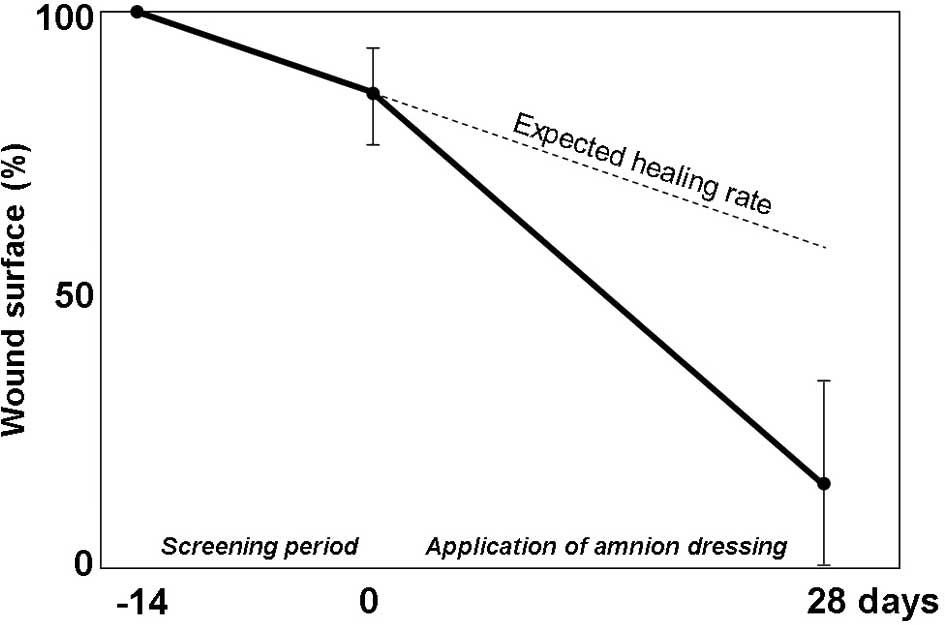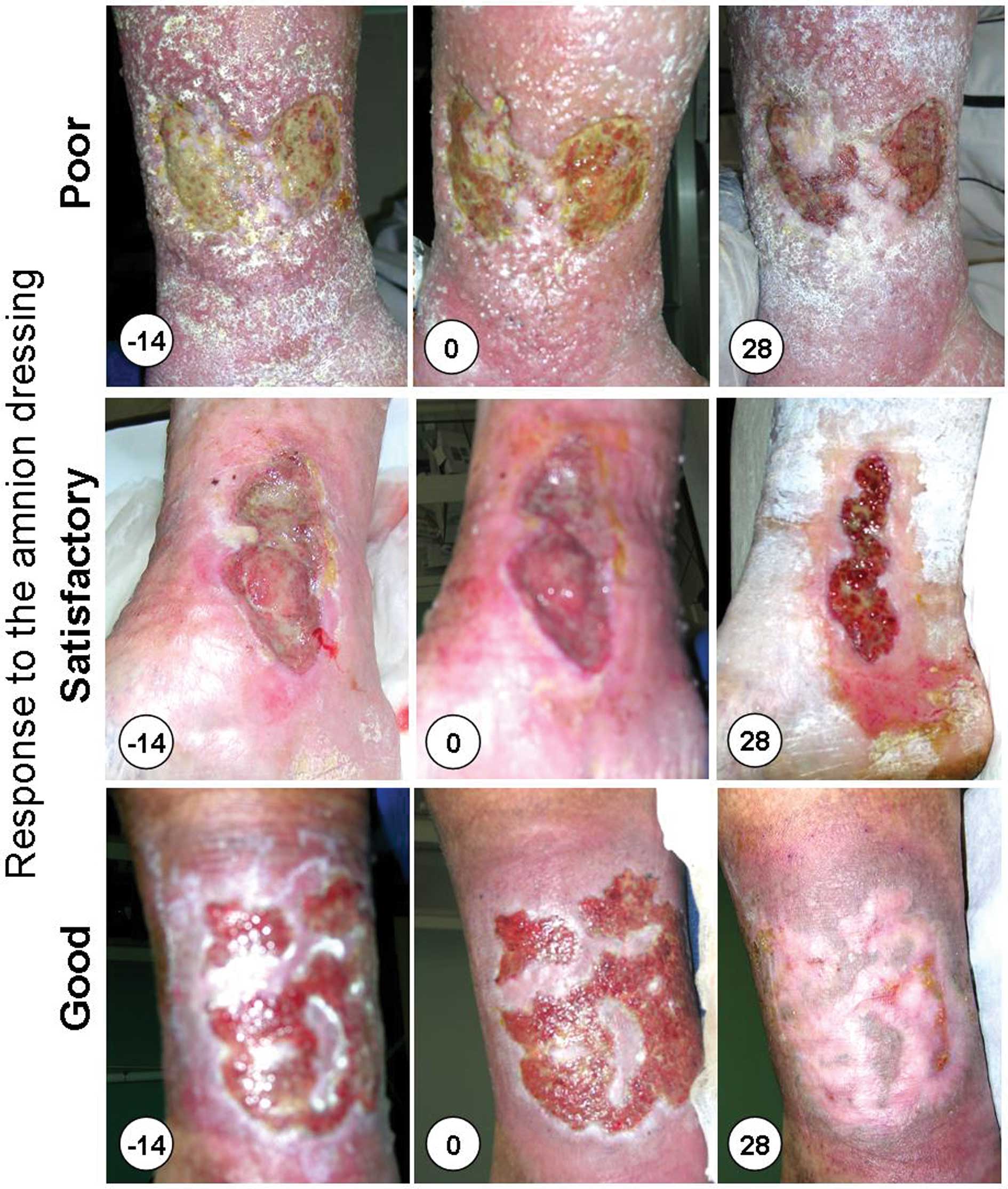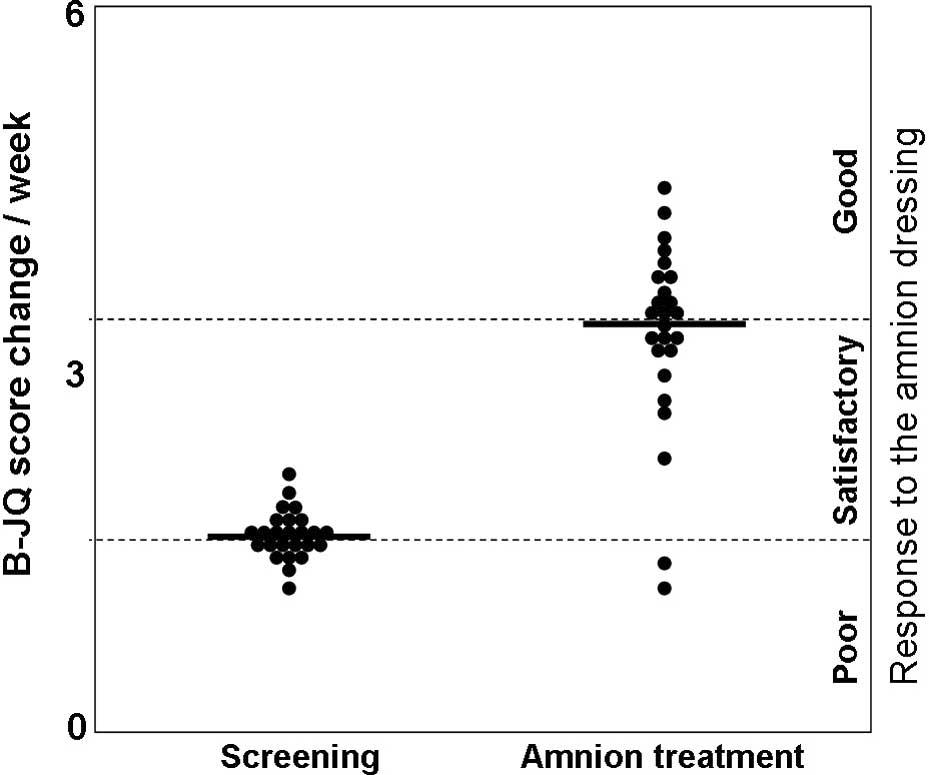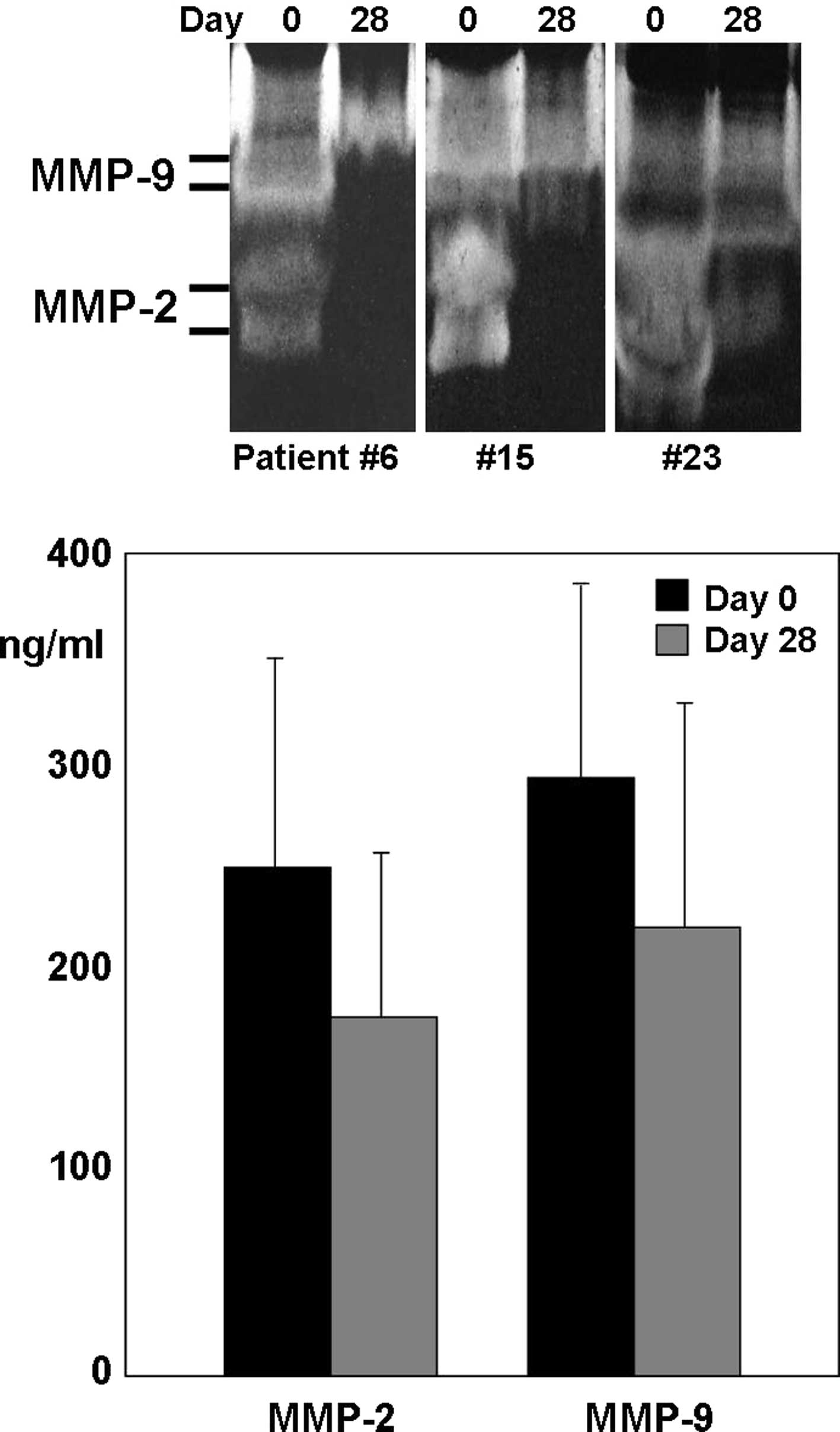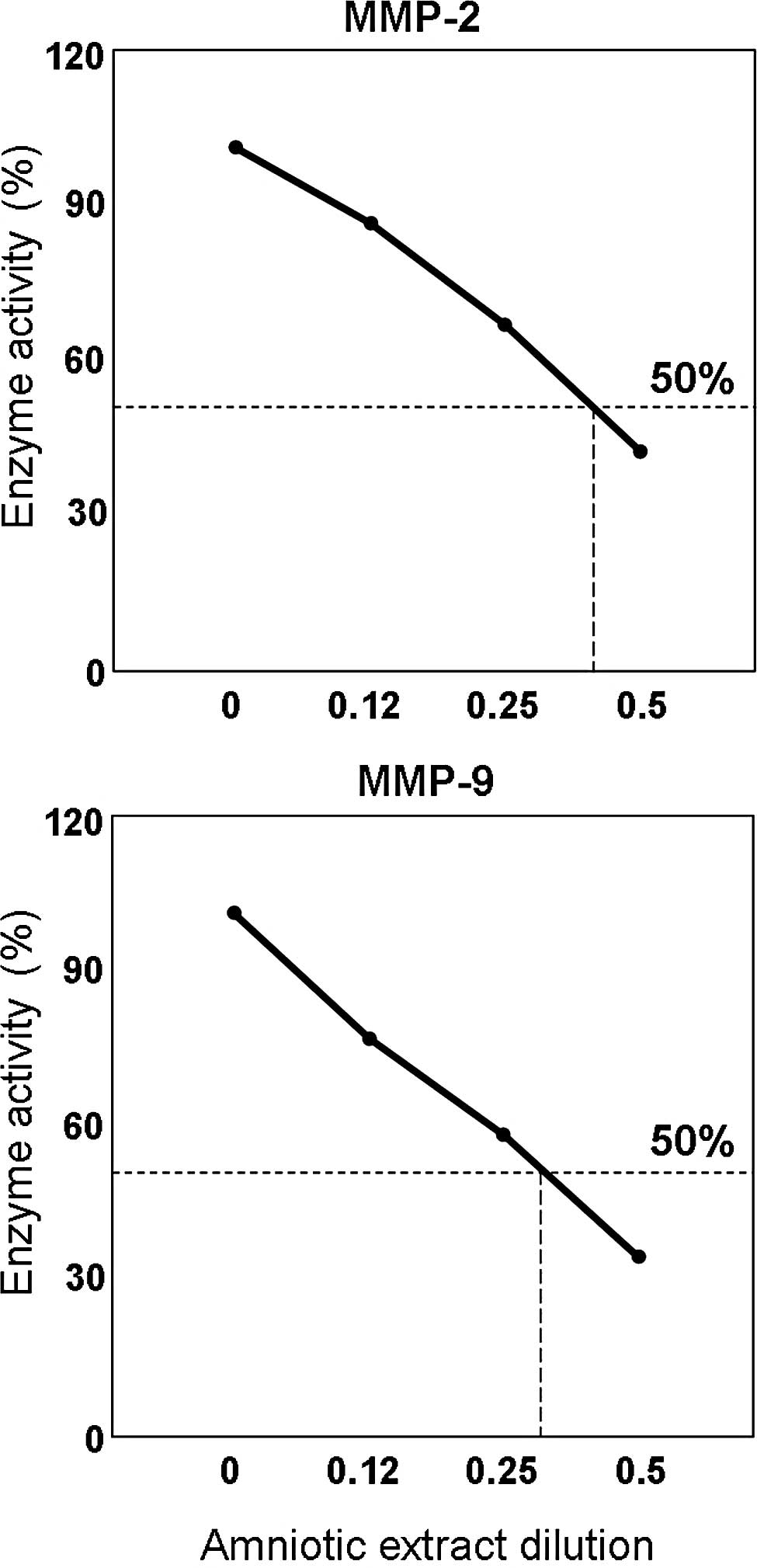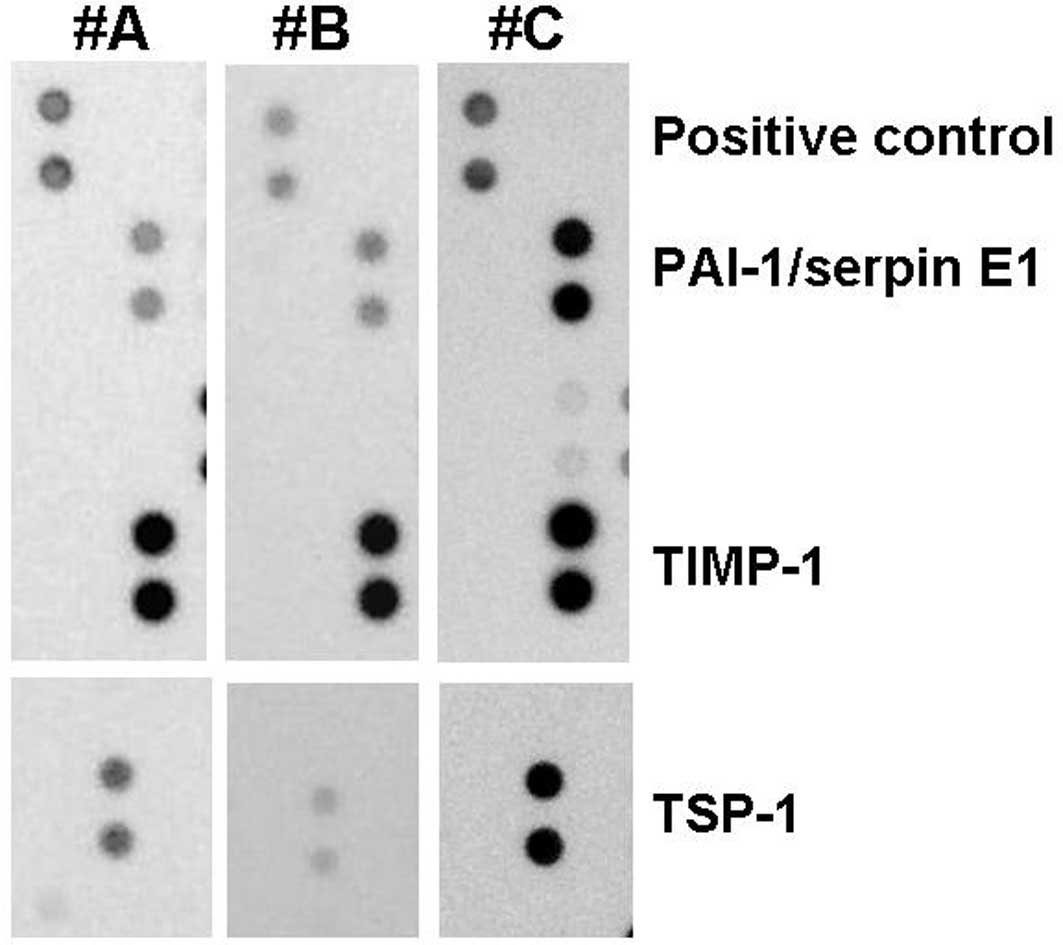|
1
|
MacKenzie RK, Brown DA, Allan PL, Bradbury
AW and Ruckley CV: A comparison of patients who developed venous
leg ulceration before and after their 50th birthday. Eur J Vasc
Endovasc Surg. 26:176–178. 2003. View Article : Google Scholar : PubMed/NCBI
|
|
2
|
Mustoe TA, O’Shaughnessy K and Kloeters O:
Chronic wound pathogenesis and current treatment strategies: a
unifying hypothesis. Plast Reconstr Surg. 117:S35–S41. 2006.
View Article : Google Scholar : PubMed/NCBI
|
|
3
|
Litwiniuk M, Grzela T and
Brawura-Biskupski-Samaha R: Clinical Immunology: Chronic
inflammation in venous leg ulcer - problems and perspectives. Centr
Eur J Immunol. 34:247–251. 2009.
|
|
4
|
Tauzin H, Humbert P, Viennet C, Saas P and
Muret P: Human amniotic membrane in the management of chronic
venous leg ulcers. Ann Dermatol Venereol. 138:572–579.
2011.PubMed/NCBI
|
|
5
|
Litwiniuk M, Bikowska B, Niderla-Bielińska
J, JóŸwiak J, Kamiński A, Skopiński P and Grzela T: High molecular
weight hyaluronan and stroma-embedded factors of
radiation-sterilized amniotic membrane stimulate proliferation of
HaCaT cell line in vitro. Centr Eur J Immunol. 36:205–211.
2011.
|
|
6
|
Jiang D, Liang J and Noble PW: Hyaluronan
in tissue injury and repair. Ann Rev Cell Dev Biol. 23:435–461.
2007. View Article : Google Scholar : PubMed/NCBI
|
|
7
|
Wolbank S, Hildner F, Redl H, van
Griensven M, Gabriel C and Hennerbichler S: Impact of human
amniotic membrane preparation on release of angiogenic factors. J
Tissue Eng Regen Med. 3:651–654. 2009. View
Article : Google Scholar : PubMed/NCBI
|
|
8
|
Russo A and Bonci P and Bonci P: The
effects of different preservation processes on the total protein
and growth factor content in a new biological product developed
from human amniotic membrane. Cell Tissue Bank. 13:353–361. 2012.
View Article : Google Scholar
|
|
9
|
Tyszkiewicz JT, Uhrynowska-Tyszkiewicz IA,
Kaminski A and Dziedzic-Goclawska A: Amnion allografts prepared in
the Central Tissue Bank in Warsaw. Ann Transplant. 4:85–90.
1999.PubMed/NCBI
|
|
10
|
Grzela T, Brawura-Biskupski-Samaha R,
Jelenska MM and Szmidt J: Low molecular weight heparin treatment
decreases MMP-9 plasma activity in patients with abdominal aortic
aneurysm. Eur J Vasc Endovasc Surg. 35:159–161. 2008. View Article : Google Scholar : PubMed/NCBI
|
|
11
|
Niknejad H, Peirovi H, Jorjani M,
Ahmadiani A, Ghanavi J and Seifalian AM: Properties of the amniotic
membrane for potential use in tissue engineering. Eur Cell Mater.
15:88–99. 2008.PubMed/NCBI
|
|
12
|
Chem PL, Baum CL and Arpey CJ: Biologic
dressings: current applications and limitations in dermatologic
surgery. Dermatol Surg. 35:891–906. 2009. View Article : Google Scholar : PubMed/NCBI
|
|
13
|
Bjarnsholt T, Kirketerp-Moller, Jensen P,
et al: Why chronic wounds will not heal: a novel hypothesis. Wound
Repair Regen. 16:2–10. 2008. View Article : Google Scholar : PubMed/NCBI
|
|
14
|
Rayment EA, Upton Z and Shooter GK:
Increased matrix metalloproteinase-9 (MMP-9) activity observed in
chronic wound fluid is related to the clinical severity of the
ulcer. Br J Dermatol. 158:951–961. 2008. View Article : Google Scholar : PubMed/NCBI
|
|
15
|
Wysocki AB, Kusakabe AO, Chang S and Tuan
TL: Temporal expression of urokinase plasminogen activator,
plasminogen activator inhibitor and gelatinase-B in chronic wound
fluid switches from a chronic to acute wound profile with
progression to healing. Wound Rep Reg. 7:154–165. 1999. View Article : Google Scholar
|
|
16
|
Saito S, Trovato MJ, You R, et al: Role of
matrix metalloproteinases 1, 2, and 9 and tissue inhibitor of
matrix metalloproteinase-1 in chronic venous insufficiency. J Vasc
Surg. 34:930–938. 2001. View Article : Google Scholar : PubMed/NCBI
|
|
17
|
Grzela T, Bikowska B and Litwiniuk M:
Matrix metalloproteinases in aortic aneurysm - executors or
executioners? Etiology, Pathogenesis and Pathophysiology of Aortic
Aneurysms and Aneurysm Rupture. Grundmann R: Intech Publ; pp.
25–54. 2011, Available from: http://www.intechopen.com/articles/show/title/matrix-metalloproteinases-in-aortic-aneurysm-executors-or-executioners-.
|
|
18
|
Fu X, Parks WC and Heinecke JW: Activation
and silencing of matrix metalloproteinases. Semin Cell Dev Biol.
19:2–13. 2008. View Article : Google Scholar : PubMed/NCBI
|
|
19
|
Suzuki K, Nakayama H and Doi K: Kinetics
of matrix metalloproteinases and their regulatory factors in
mercuric chloride-induced tubulointerstitial fibrosis in Brown
Norway rats. Exp Toxic Pathol. 53:337–343. 2001. View Article : Google Scholar
|
|
20
|
Duffy M: The urokinase plasminogen
activator system: role in malignancy. Curr Pharm Des. 10:39–49.
2004. View Article : Google Scholar : PubMed/NCBI
|
|
21
|
Bein K and Simons M: Thrombospondin type 1
repeats interact with matrix metalloproteinase 2. Regulation of
metalloproteinase activity. J Biol Chem. 275:32167–32173. 2000.
View Article : Google Scholar : PubMed/NCBI
|



